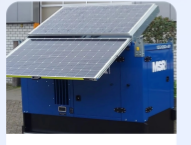
Unleashing Hydrogen Power: Sailing into the Future with Waterst of Generators
The quest for sustainable energy is more than a contemporary trend; it’s the frontier of innovation, and a vital pursuit in ensuring a greener and cleaner future for our planet. While the public’s eye has been captured by the likes of solar and wind technology, another energy powerhouse has been quietly making waves – hydrogen. Within this silent giant’s toolkit, waterst of generators shine as a beacon of self-sufficiency and environmental conservation. This article navigates the seas of hydrogen power, elucidating the potentials of waterst of generators and the horizons they’re set to unlock.
The Essence of Hydrogen
Hydrogen, the most abundant element in the universe, might just be Earth’s most overlooked resource. Its simplicity – a single proton orbited by a lone electron – belies the potential it holds as a clean, high-energy fuel. In a landscape increasingly wary of carbon emissions, hydrogen emerges as a champion, producing only water as a byproduct when burned. However, the quest to harness this potential is not without its challenges, with issues such as production sustainability and energy density needing to be addressed.
Steaming Towards Green Hydrogen
While grey hydrogen, derived from natural gas through a method that releases harmful carbon dioxide, is still widely employed, the industry propulsion towards ‘green’ hydrogen is palpable. Through processes like electrolysis, where water is split into hydrogen and oxygen using renewable energy sources, the resulting hydrogen is as clean as it gets. Notably, this exciting green hydrogen could redefine our aviation, shipping, and energy storage sectors.
Waterstof Generators Decoded
Hoisting our sails into the realm of hydrogen generator (Waterstof generator) , or hydrogen generators, we’re confronted with the question – what are they, and how do they work? These devices are the heart of the hydrogen revolution, responsible for producing hydrogen on-site, eliminating the need for transportation and storage of high-pressure gas.
A Tale of Two Electrons
The operation of a waterstof generator is elegantly simple. Pass an electric current through water – H2O – and the resultant electrolysis occurs, splitting it into hydrogen and oxygen gas. This hydrogen can be collected and stored for use as a fuel. The beauty lies in its versatility; as long as there is water and power, hydrogen production is as portable as it gets.
Unlocking a Sustainable Maritime Future
One area where waterstof generators are already making a splash – pun intended – is maritime transportation. The shipping industry, a significant source of global carbon emissions, is increasingly looking to hydrogen as the fuel of the future. Waterstof generators, when paired with fuel cells, can power vessels with the efficiency and cleanliness essential for sustainable maritime operations.
The Blue Horizon of Shipping
Waterstof generators are catalysts for a maritime revolution. With companies like Toyota and Siemens investing in hydrogen-powered ship engines and waterstof generation technology, the industry is on the cusp of a monumental shift. Not only do these developments promise to reduce the sector’s carbon footprint, but they also signal a paradigm of energy independence.
The Road Ahead
Breezing through the possibilities of waterstof generators, it’s clear that the age of hydrogen energy is upon us. From remote power generation to revolutionizing industries, the applications are as broad as they are promising. The road to a hydrogen-powered civilization is long and winding, yet each voyager – and every waterstof generator – is a testament to our collective sailing spirit, navigating towards a cleaner, more sustainable horizon.